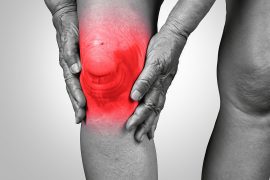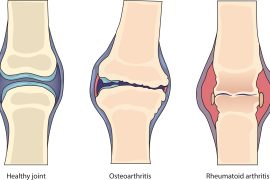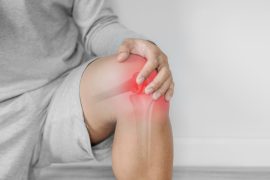Deciding to get any surgery is an important decision and Total Knee Replacement or TKR is no different. What makes this decision even more vital is the crucial role our knees play in our lives. Needed for the single most common movement in our lives, walking, our knees are a feat of natural engineering. Everything from climbing stairs, running, kicking, squatting and even sitting requires this joint to function smoothly. Which is why it is no surprise that chronic knee issues can make life very difficult for both those who are suffering from the disease and their caretakers or family. In such a scenario, opting for TKR gives the patients and their family a new chance at enjoying an improved quality of life. Wondering if it is the best option for your or your loved ones? Here’s some information that could help your decision-making process.
What is TKR?
One of the most common surgeries conducted in the world today, Total Knee Replacement is a complete replacement of the knee joint with a suitable metal implant. The procedure is conducted under general anaesthesia and takes about 2-3 days of hospital stay. While the final decision rests on you and your orthopaedic surgeon, Total Knee Replacement surgery is advisable for those who are not responding to other treatments, are in significant distress or have been reduced to limited mobility.



The knee is human body’s largest joint and is made up of the lower end of the thighbone, the upper end of the shinbone and the kneecap. A knee replacement includes replacing some or all of the component surfaces of the knee joint with artificial implants. A knee replacement is performed to repair the damaged weight-bearing surfaces of the knee joint caused due to inflammatory diseases or injury. The damage overtime leads to extreme pain and can restrict joint mobility. Knee replacement is a major surgical procedure requiring hospital admission for 2 to 3 days.
A knee replacement could be more precisely termed as knee “resurfacing” as this procedure actually involves replacement of the surface of the bones.
What is the procedure like?
TKR is actually a misnomer which leads people to believe that the entire knee with get replaced. This is certainly not the case! Only the damaged parts of one’s knee are replaced. The surgeon will first remove all the damaged cartilage from the ends of the bones and reshape them. The new implant is then attached to the ends of the bone and a plastic spacer is put between them to reduce friction and ensure smooth movement. If the damage is significant, the surgeon might also replace the back of the kneecap with a plastic button.
Is getting TKR done in India a wise decision?
Absolutely so! In fact, India is fast becoming a hub for TKR, with many foreign patients opting to get operated in India in order to not only save costs but also get treated with the latest tools and technology. What’s more, is that the success rate of TKR in India is deemed to be one of the finest in the world! To add to that, the costs of undergoing TKR in India is significantly less than in other countries. Careful regulation of implant prices by the government also means that TKR need not be a major drain on one’s resources. With a huge pool of trained and skilled orthopaedic surgeons and hospitals equipped with advanced infrastructure, one can rest assured that one’s loved ones are in good hands.
I have heard that TKR recovery involves both pain and inflammation?
Recovering from any surgery requires time, care and precaution, and TKR is no different. As long as you carefully listen to the orthopaedic and follow their instructions carefully, there are very few chances that anything can go truly wrong. To ensure that you or our loved one experience minimal discomfort, here are some things that one can do, like apply an ice pack 3-4 times daily for a minimum of 10-20 minutes. If the cold is an issue, one can also opt for heat packs, but only once the first swelling subsides. Keeping the leg elevated above the heart and performing ankle pump exercises also help to decrease swelling, raise blood circulation, and most importantly, prevent the formation of blood clots. If in case the swelling does not reduce even after regular icing, then it is best to consult your doctor/PT to get a prescription an NSAID medication. Alternatively, one can wear a compression cloth provided by one’s doctor to get relief from the inflammation.
How will TKR benefit my & my loved one’s life?



95% of patients see a significant improvement in the quality of life and mobility post surgery and physi-cal therapy. In the rare 10% of cases, the patient may still end up a degree of pain. That being said, the chances of unsuccessful implantation are pretty rare and complications rarer still and the benefits far outweigh these chances. The biggest benefit of TKR though is the immense quality of life improvement it bestows on the patient. Instead of being bedridden, wheelchair bound or on crutches, they can take on life with a greater enthusiasm and take up their previous hobbies and interests. They can go for walks with their friends and loved ones, attend social gatherings without fear of pain or discomfort and even become more independent. This is especially crucial for older patients as being housebound or having limited mobility reduces their social interactions which can be detrimental to their mental health in the long run.
Is an imported implant better than an Indian one?
Not at all! Indigenous knee implants are not only more cost-effective than their imported counterparts, but they are also a better fit for the Indian knee morphology that is different from those of westerners. Do consult a doctor to get credible solutions for your healthy life.
Many people put off undergoing or discourage their loved ones from undergoing TKR as they feel that medicine and alternative treatments may be better than going under the knife due to the potential complications. Unfortunately, this only makes the patient lead a progressively poorer quality of life. Opting for a TKR with its low complications and the high success rate is not only the right option for those in significant pain and discomfort, but it is also the best way to regain one’s or one’s loved one’s previous quality of life.




